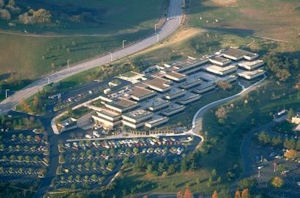by James A. Bacon
A couple of years ago, the creative geniuses at Xerox’s renowned Palo Alto Research Center (PARC) labs were brainstorming ways to shake up one of the stodgiest sectors of the American economy: parking. A new wave of technologies made it possible to do things never thought possible before, such as adjusting the charge for parking spaces in response to real-time changes in supply and demand. New smart phone apps were making it possible for drivers to search for empty spaces on the street and even in driveways garages, and to compare prices. Who knows, maybe people even would take to the idea of “reserving” parking spots ahead of time, to ensure an empty spot on an important occasion.
Much of the thinking was based upon classical economic theory. The Xerox team figured a city should aim to keep the number of vacant, on-street spaces between 10% and 25%. Raise parking charges when too many spaces were filled and drop the fee when there were too many empty spaces. That would strike a nice balance, ensuring that the spaces were close to fully utilized while leaving enough vacancies so drivers could always find an empty space (if they were willing to pay the price). Prices could be adjusted on a block-by-block basis to optimize outcomes.
However, theory often collides with reality. Humans can be unpredictable or downright perverse. Among the challenges in persuading them to act like economically rational agents is making it easy for them acquire and process usable information.
James Glasnapp, a senior researcher with PARC, discovered that there can be a wide gap between theory and reality. As an ethnographer — a researcher who studies the behavior of people in natural settings — he and his team members conducted close-up studies of parking in California communities that allowed the PARC parking team to fine-tune its product both before and after commercializing it last year in downtown Los Angeles.
Using a combination of simple observation, videotaping and personal surveys, Glasnapp and his team spent many days in the urban wild. “We wanted to understand from the parker’s point of view how they make decisions about how to park.” It turns out that people were eager to express themselves. “Everyone loves to complain.”
Glasnapp got an earful. Much to the dismay of classical economists and parking apps, most people had no idea what the parking prices were. Few realized that prices varied from street to street. “They were completely surprised that parking might be cheaper catty corner to where they were. Very few people knew about the smart apps.”
People don’t think in advance about where they’re going to park. They just decide upon a destination then start looking around for a space when they get there. The Xerox ethnographers showed people the marvelous things the parking apps could do but it took some convincing to get them to accept the value proposition that paying a small commission to extend the parking time beats fishing for coins and running out of the office to feed the meter.
Another problem the ethnographers uncovered is that people can’t use the apps when they’re driving. It takes focus to choose between open spaces in different locations and weigh that against different prices. “There’s a lot of complex information to take in,” says Glasnapp. “You need a co-pilot in the car to direct you to the cheaper parking.”
The Xerox research also showed that people do crazy things when looking for parking — like making illegal U-turns in the middle of the street, sometimes even driving over a curb, to reach an open space. Glasnapp thinks there is a tremendous potential market for reserving on-street parking, although he concedes people will have to get accustomed to the idea of driving past a seemingly empty space that someone else has reserved.
It will take time for drivers to learn how to use the parking apps and change their behavior before dynamic pricing has the effect that classical economists say it should. But Xerox is learning from experience. Among other tangible contributions, the ethnographers have made progress in simplifying oft-indecipherable parking signage. With more observation and tinkering, Glasnapp is optimistic that people will incorporate the technology into their routines and change the behavioral dynamics of parking. Says he: “These are the things we have been thinking about.”



